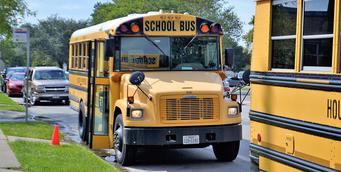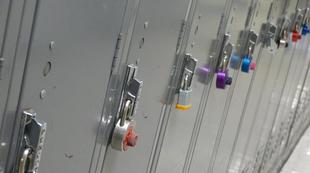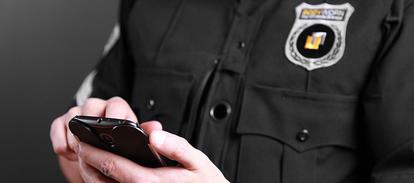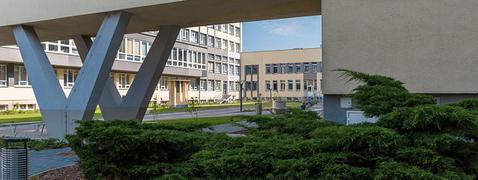SecurityAdvisoryCouncil.com
Security Risk Analysis - Issues - Strategies - Solutions - Resources
Security Risk Advisory Consultants - Advanced Security Planning
Security MostWanted For America!
School Security & Safety - Educational Campus Security
School Campus Security Measures
Comprehensive school campus security relies on a multi-layered strategy that integrates physical security measures, technology, and emergency preparedness with ongoing training.
The approach varies depending on the size of the campus, from a single building to a sprawling university with multiple facilities.
Physical security measures
These measures focus on hardening the physical environment to deter and detect unauthorized access.
Access control: Campuses use key cards, mobile phone credentials, biometrics, or PIN codes to regulate entry into buildings and sensitive areas like labs or data centers.
Visitor management: Most schools require visitors to enter through a single, controlled access point, sign in, present an ID, and wear a badge. Some systems use vestibules, where visitors are checked before gaining full access to the building.
Perimeter security: Fencing, gates, proper landscaping, and clear signage establish campus boundaries and create a clear distinction between public and restricted areas. Good lighting is also used to increase visibility and deter criminal activity.
Reinforced doors and windows: Hardened classroom doors and shatter-resistant window film can slow down intruders, providing occupants and law enforcement with more time to react.
Manned guarding: Security officers or school resource officers (SROs) provide a visible deterrent through foot, mobile, or bike patrols, and can respond immediately to incidents.
Security technology
Modern campuses use integrated technologies for better monitoring, communication, and response coordination.
Surveillance cameras: High-resolution cameras are placed in entrances, hallways, and outdoor areas. Modern systems use AI-powered video analytics to detect suspicious activity, recognize license plates, and send alerts.
AI-powered sensors: Discreet sensors can be used in privacy-sensitive areas, like restrooms, to detect vaping, smoke, noise, or signs of physical aggression.
Mass notification systems: These systems can send immediate alerts via text, email, phone call, or push notifications to inform the campus community of an emergency, from a lockdown to a weather event.
Panic alert systems: Panic buttons, which can be physical or mobile, are used to quickly alert security or law enforcement in an emergency and initiate lockdown procedures.
Gunshot detection systems: These systems use acoustic sensors to detect and pinpoint the location of a gunshot, allowing for a rapid response from security and law enforcement.
Cybersecurity: Security extends to the digital realm to protect sensitive data. Measures include strong authentication, firewalls, and regular vulnerability assessments.
Policies, training, and emergency response
Beyond hardware, effective security depends on clear policies and regular practice.
Emergency response plans: A comprehensive plan includes procedures for lockdowns, evacuations, natural disasters, and other emergencies. These plans are developed in collaboration with local law enforcement and first responders.
Regular drills: Frequent practice drills help students and staff become familiar with emergency procedures so they can act quickly and effectively under pressure.
Threat assessments: Multidisciplinary teams, including administrators, teachers, and mental health professionals, are trained to identify and address potential security threats before they escalate
.
Anonymous reporting systems: Students and staff are given a way to report suspicious activity or threats discreetly.
Security audits: Regular, third-party security audits help identify vulnerabilities and ensure security protocols and technologies are effective.
Mental health support: Promoting mental well-being on campus is a proactive security measure, as it can help prevent violence.
By Signing Up For Our News Letter, You Will Receive The Latest Security News
Once-A-Month!

Using Artificial Intelligence
In School Security Safety
AI in school security uses machine learning and computer vision to proactively identify threats, automate emergency responses, and analyze data to improve campus safety. These systems can be integrated with existing infrastructure, such as security cameras, to provide a more comprehensive and efficient security solution than traditional reactive methods.
AI-powered video surveillance
Instead of relying on human operators to monitor camera feeds, AI can provide 24/7, continuous, and intelligent monitoring.
Weapon detection: Algorithms analyze video feeds for objects resembling firearms or other weapons and alert security personnel in real-time. This provides precious seconds for staff and law enforcement to intervene before an incident escalates.
Suspicious behavior analysis: AI systems can detect behavioral patterns that may indicate a developing conflict, such as unusual crowd formations, aggressive postures, or loitering in restricted areas. This allows for interventions before a situation becomes violent.
Incident tracking: After a potential threat is identified, AI can track the individual across different camera feeds based on their appearance, even after a weapon is concealed. This gives first responders enhanced situational awareness.
Proactive monitoring: AI can monitor for unauthorized entry after hours or for individuals entering restricted zones like labs or staff-only areas.
Visitor management and access control
AI can enhance traditional visitor management systems to increase screening speed and accuracy.
Watchlist screening: AI-powered facial recognition can quickly scan a visitor's face and compare it against a watchlist of individuals who are prohibited from campus grounds, such as registered sex offenders or people with restraining orders.
Automated entry: The system can automatically verify authorized individuals, such as faculty and students, speeding up access and reducing the risk of human error in identity checks.
Environmental and audio monitoring
AI can analyze data from specialized sensors placed in private areas where cameras are not permitted, such as bathrooms and locker rooms.
Vape and smoke detection: Sensors can detect airborne particulate matter and chemicals, differentiating between regular vapor and substances like nicotine or THC. When vaping is detected, a silent alert is sent to administrators.
Aggression and keyword detection: Integrated audio sensors can analyze noise levels to detect shouting, yelling, or keywords related to violence or bullying.
Vandalism detection: Sensors can be equipped with accelerometers to detect tampering and alert officials if a device is moved or damaged.
Predictive analytics and data management
AI can analyze security data to identify trends and inform future safety strategies.
Resource optimization: By identifying areas and times where incidents most often occur, administrators can allocate security personnel and other resources more effectively.
Improved investigations: AI can quickly sift through vast amounts of surveillance footage to find specific individuals or events, which speeds up investigations and reduces the burden on staff.
Online threat and safety monitoring
Some school districts use AI-powered software to monitor student activity on school-issued devices and accounts.
Content flagging: Algorithms scan online conversations, searches, and social media posts for signs of self-harm, bullying, or violence.
Early intervention: When concerning content is flagged, the system immediately notifies school officials and sometimes law enforcement. This aims to enable early intervention in mental health crises and potential threats. Critics, however, have raised concerns about student privacy and the risk of false alarms.
COMMENTARY
By JW Davis - President
SecurityAdvisoryCouncil.com
Tampa, Fla - It is not hard to see that in todays 21st century world that our schools and educational campuses are under full targeted attacks from demoralized individuals from a wide assortment of twisted thoughts and beliefs.
Our children, in all phases of their educational life, are in every possible way the future of our nation and we, as mothers and fathers, brothers, sisters, aunts, uncles and grandparents, should spare no expense to have them protected in every way, shape and form.
Mentally disturbed individuals who have absolutely no regard for human life in any meaningful way, should face an unstoppable deadly force any time they threaten our schools and school grounds with evil intensions to harm our children and schoolteachers and officials.
School systems across this nation should immediately institute a Security Assessment Team to study and take every full measure possible to see that our school facilities and grounds are an impenetrable fortress incapable of sustaining any prolonged attack from anyone to harm our children.
It is obvious as the nose on your face that active school shooters remain the top safety concern for our schools across the nation, and a significant number of students and educators believe overwhelmingly, schools are not prepared for such events.
Many parents, teachers, and education officials hold varying, and often conflicting, opinions on school safety, reflecting concerns about gun violence, mental health, security measures, and school culture. Students, parents, and educators frequently disagree on the effectiveness and impact of different security measures, such as arming teachers or installing metal detectors.
It is time for the American people to realize and enact strict security measures to protect the future of our country, our children at all of our public schools, as well as all of our institutions of higher learning. Amen.
How Artificial Intelligence Can Help With
School Campus Lockdown Procedures
AI can help tremendously with school lockdown procedures primarily through automation, real-time threat detection, and enhanced communication. AI-powered systems can automatically initiate lockdown protocols in seconds, reducing human error and saving critical time during emergencies.
Detecting and initiating lockdowns
AI-powered video and audio analytics can detect threats and automatically trigger lockdown procedures, providing a significantly faster and more accurate response than traditional manual alerts.
Weapon detection: AI systems instantly analyze video feeds for objects resembling firearms or other weapons. If a weapon is detected, the system can automatically trigger a lockdown and simultaneously notify staff, security, and emergency services.
Audio anomaly detection: Audio sensors can be placed in classrooms, hallways, and private areas like restrooms to listen for loud bangs, gunshots, or aggressive vocal tones like shouting and yelling. An AI can then process these sounds and, if a threat is confirmed, automatically initiate the lockdown.
Behavioral pattern analysis: Advanced AI can be trained to recognize suspicious movements, such as a person loitering in a restricted area or a large, unusual crowd forming in a hallway. The system alerts security personnel for immediate intervention.
Executing automated lockdown protocols
Once a threat is detected, AI-driven systems can integrate with a school's existing infrastructure to automate the physical lockdown process, reducing delays and minimizing risk.
Automated access control: AI systems can automatically lock doors and disable keycard access to prevent an intruder from entering other parts of the building.
Targeted lockdown: For campuses with multiple buildings, a geographic lockdown can be initiated in the immediate area of the threat while other areas remain operational. The AI provides real-time updates on the threat's location to enable this targeted response.
Real-time information for responders: For first responders, AI provides real-time 3D campus maps showing the precise location of the threat and highlighting clear evacuation routes.
Enhancing communication during a lockdown
During an emergency, AI streamlines communication by providing critical, real-time information to administrators, teachers, and first responders.
Mass notifications: AI-powered systems can send immediate alerts via text, email, and campus-wide PA announcements to inform the community of a lockdown. These alerts can also be used to send updates and instructions as the situation develops.
Occupancy information: AI can analyze data to provide first responders with information on how many people are in a specific room or building, enabling them to make more informed decisions and prioritize their actions.
Communication support: AI can help administrators manage and respond to incoming queries during a crisis, freeing them to focus on immediate safety issues. It can also help draft and relay instructions to staff in different areas of the campus.
Post-incident analysis and training
After an emergency, AI can help schools review and improve their lockdown procedures.
Incident documentation: AI can compile detailed incident reports based on video footage, providing timestamps and location information. This reduces the burden on staff and ensures comprehensive records for investigations.
Realistic simulations: AI can generate complex, realistic lockdown scenarios for drills, allowing administrators to test and refine their emergency protocols. The system can adapt scenarios to the school's unique layout and population, ensuring training is relevant and effective.
Personal Safety & Security Tips For Everyday Life
Be aware of your
surroundings at all times. Always remain focused.
School Building Security Measures
These measures control access to the campus and create a secure environment.
Controlled access points. Limit entry to school buildings to a single, designated main entrance during school hours. All other doors should remain locked.
Visitor management system. Require all visitors to check in, provide identification, and wear a badge. This helps monitor and track everyone on campus.
Secure perimeter and lighting. Use high-quality fencing and secure gates to define the campus boundary. Install and maintain lighting in parking lots, walkways, and other exterior areas to increase visibility.
Surveillance cameras. Place cameras in strategic indoor and outdoor locations, including hallways, entrances, and common areas.
Classroom security. Equip classroom doors with locks that can be locked from the inside during a lockdown. Consider ballistic-resistant film for windows and doors.
Security personnel. Hire or contract with trained security personnel or a School Resource Officer (SRO) to monitor the campus and respond to incidents.
Student Mental Health And Wellness
A positive school environment where students feel safe and connected can help prevent violence and bullying.
Mental health support. Provide access to school-based counseling and connect students and their families to community mental health providers and resources.
Anonymous reporting system. Implement a confidential system that allows students, staff, and parents to report threats, bullying, or other concerns without fear of retaliation.
Social-emotional learning (SEL). Incorporate SEL into the curriculum to teach students how to manage emotions and build positive relationships.
Conflict resolution. Offer conflict resolution and peer mediation programs to address issues before they escalate.
Positive school culture. Foster an inclusive environment where students feel connected, respected, and supported.
Encourage positive relationships between students and staff through clubs, group work, and after-school programs.















